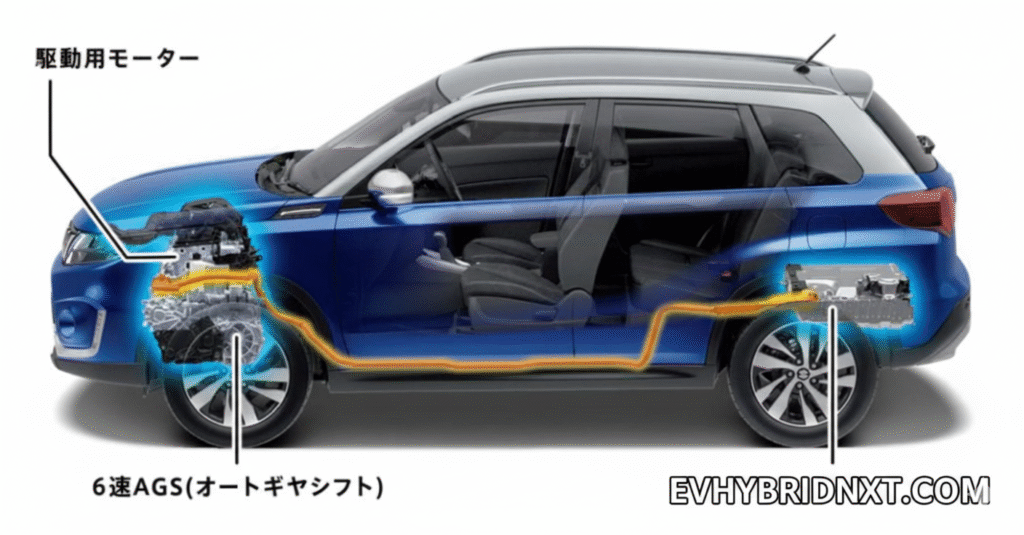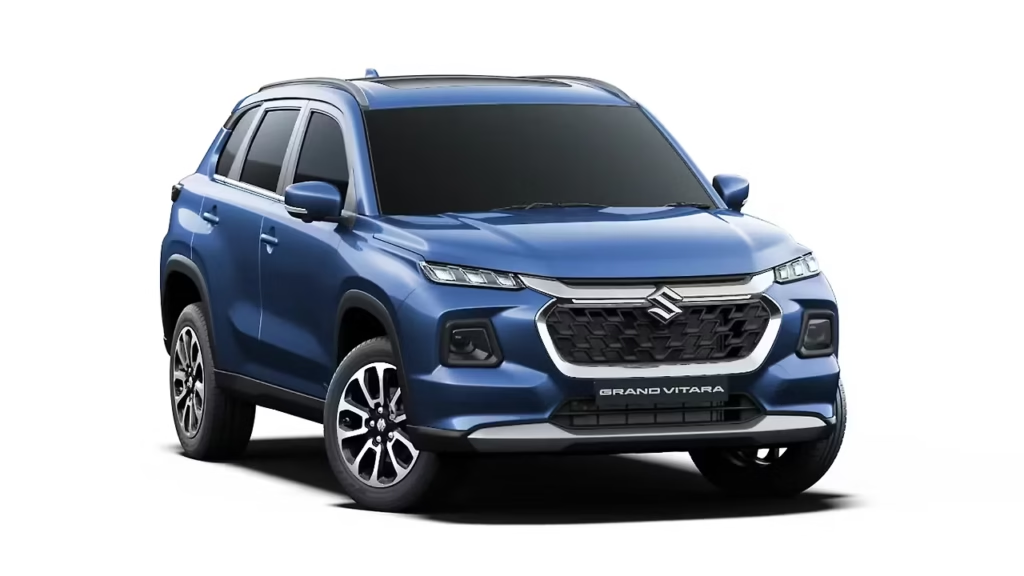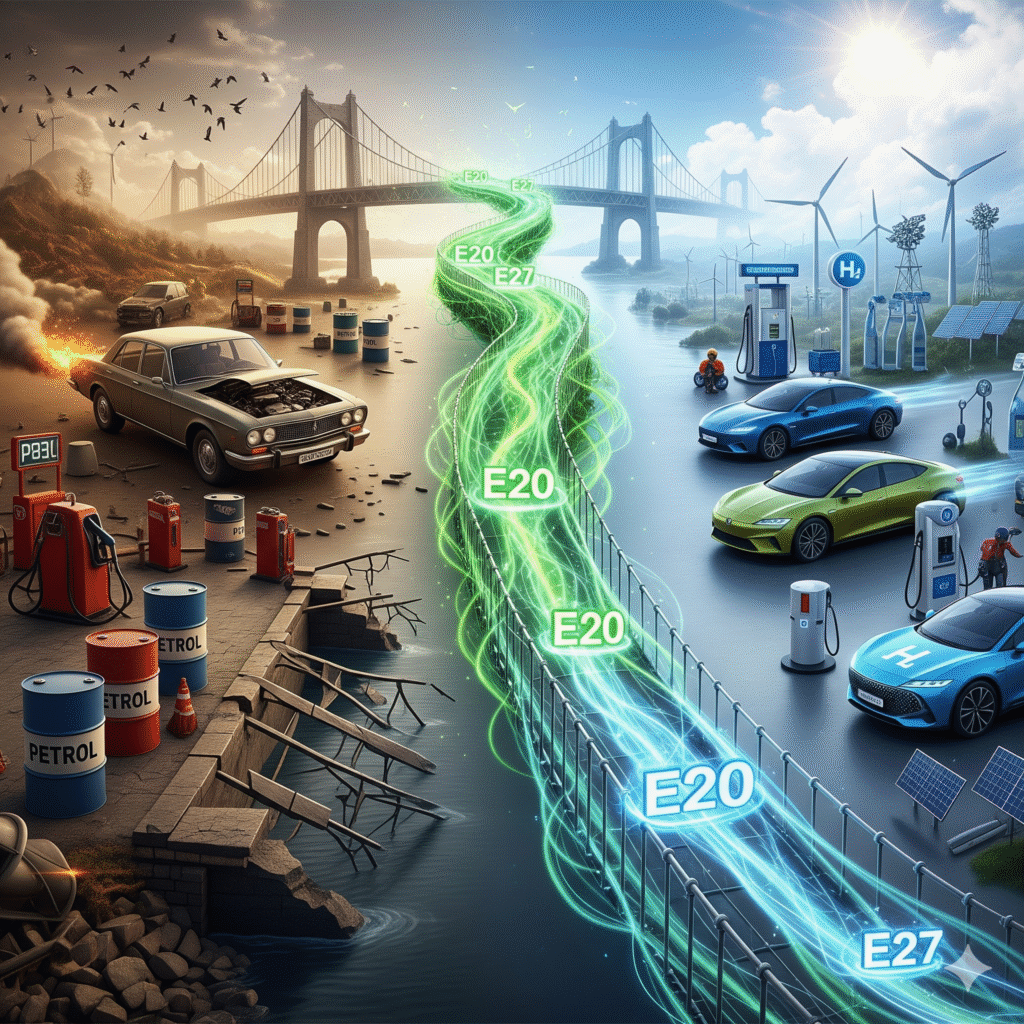Maruti Suzuki, India’s leading passenger vehicle manufacturer, is accelerating its push toward greener mobility with a lineup of four new hybrid cars set to launch by 2026. These models—Victoris, Fronx, Baleno, and a Suzuki Spacia-based compact MPV—will feature Maruti’s in-house developed series hybrid powertrain, codenamed HEV. This innovative system promises cost-effective performance and exceptional fuel efficiency, with a claimed mileage exceeding 35 kmpl. Below, we dive into the details of these upcoming hybrid models, their features, and their significance in India’s evolving automotive landscape.
Maruti’s New Series Hybrid Powertrain: A Game-Changer Maruti Suzuki’s HEV series hybrid system is designed to be a cost-effective alternative to Toyota’s Atkinson cycle hybrid technology. Unlike traditional hybrids where the internal combustion engine directly powers the wheels with electric motor assistance, Maruti’s series hybrid uses a 1.2L Z-Series petrol engine as a generator to charge a battery, which in turn powers an electric motor to drive the wheels. This setup, inspired by Nissan’s e-Power technology, prioritizes efficiency, particularly in urban traffic, and is expected to deliver over 35 kmpl, making it one of the most fuel-efficient systems in India.
The HEV system will debut in 2026 with the Maruti Fronx and will later be integrated into the Baleno, Spacia-based MPV, and other models like the Swift (2027) and Brezza (2029). With lower production costs and high fuel efficiency, this powertrain is poised to make hybrid technology accessible to India’s mass market.
1. Maruti Victoris: The Flagship Hybrid SUVThe Maruti Victoris, launched in September 2025, is a midsize SUV designed to redefine the segment with its blend of technology, safety, and efficiency. It offers three powertrain options: a 1.5L mild hybrid petrol (103 bhp), a 1.5L strong hybrid (116 bhp), and a 1.5L petrol + CNG (89 bhp). The strong hybrid variant, paired with Toyota’s hybrid technology, delivers an impressive 28.65 kmpl, making it India’s most fuel-efficient midsize SUV.
Key Features:
Theatre on Wheels: 10.1-inch SmartPlay Pro X touchscreen with Dolby Atmos and Infinity6 by Harman audio.
Safety: Level 2 ADAS, 6 airbags, and a high-definition 360-degree camera with 11 views.
Design: Sleek wraparound design, 64-color ambient lighting, and a segment-first underbody CNG tank for uncompromised boot space.
Connectivity: Next-gen Suzuki Connect telematics with eCall and over 60 features.
Positioning: The Victoris targets young, tech-savvy buyers looking for a premium SUV with versatile powertrains and futuristic features. It competes with the likes of the Hyundai Creta and Kia Seltos but stands out with its hybrid efficiency.
2. Maruti Fronx Hybrid: The Efficiency ChampionThe Maruti Fronx Hybrid, set to launch in mid-2026, will be the first model to feature Maruti’s in-house HEV series hybrid powertrain. Based on the Baleno-based compact crossover, the Fronx Hybrid is expected to retain its bold design while introducing hybrid-specific elements like a ‘Hybrid’ badge and tailored software. With the 1.2L Z-Series petrol engine paired with an electric motor and a small battery pack (1.5-2 kWh), the Fronx Hybrid is projected to achieve over 35 kmpl, making it one of India’s most fuel-efficient SUVs.
Key Features: Design: Expected to carry over the current Fronx’s sleek crossover styling with minor updates for the 2026 facelift, including cosmetic tweaks and hybrid badging.
Interior: Enhanced comfort features, potentially including six airbags as standard, ESP, and a longer list of convenience features like a touchscreen infotainment system.
Performance: The series hybrid system ensures efficient low-speed performance, ideal for city driving.
Positioning: The Fronx Hybrid will compete in the compact SUV segment against rivals like the Hyundai Venue and Kia Sonet, offering unmatched fuel economy and affordability. Its launch as India’s best-selling car in February 2025 underscores its market appeal.
3. Maruti Baleno Hybrid: Premium and EfficientThe next-generation Maruti Baleno Hybrid, expected in early 2026, will combine significantly improved styling with the same HEV series hybrid powertrain as the Fronx. The hatchback will feature the 1.2L Z-Series petrol engine paired with an electric motor and battery, delivering over 35 kmpl. The updated Baleno is set to offer a feature-packed interior, positioning it as a premium yet accessible option in the hatchback segment.
Key Features:
Styling: A refreshed design with sharper lines and modern aesthetics to appeal to younger buyers.
Interior: Upgraded cabin with premium materials, a larger touchscreen, and advanced connectivity features.
Safety: Likely to include six airbags, ESP, and select ADAS features, aligning with modern safety standards.
Positioning: The Baleno Hybrid will take on competitors like the Hyundai i20 and Tata Altroz, offering superior fuel efficiency and a tech-rich experience. Its hybrid powertrain makes it a practical choice for urban commuters seeking eco-friendly mobility.
4. Suzuki Spacia-Based Compact MPV: A Family-Friendly Hybrid Maruti Suzuki is set to enter the sub-4-meter MPV segment with a Suzuki Spacia-based compact MPV, codenamed YDB, slated for launch in 2026. This model will feature the 1.2L Z-Series petrol engine with the HEV series hybrid system, delivering over 35 kmpl. Unlike the Japan-spec Spacia, which uses a 660cc engine, the India-spec version will cater to local preferences with a larger, more efficient powertrain.
Key Features: Design: Expected to adopt the Spacia’s boxy, space-efficient design with India-specific tweaks for ruggedness and style.
Interior: Spacious cabin with flexible seating, ideal for small families, and a feature-rich dashboard.
Practicality: Likely to offer ample boot space and modern amenities like a touchscreen and connected car technology.
Positioning: The Spacia-based MPV will directly rival the Renault Triber and Nissan’s upcoming subcompact MPV, offering a hybrid advantage in a segment dominated by petrol and CNG options. Its high fuel efficiency and compact dimensions make it ideal for urban families.
Future Hybrid Plans: Swift and Brezza Beyond 2026, Maruti Suzuki plans to extend its HEV series hybrid powertrain to the next-gen Swift in 2027 and the all-new Brezza in 2029. These models will further democratize hybrid technology, offering fuel efficiency exceeding 35 kmpl and reinforcing Maruti’s commitment to sustainable mobility. The Swift Hybrid will likely continue its legacy as a sporty, efficient hatchback, while the Brezza Hybrid will strengthen Maruti’s dominance in the subcompact SUV segment.
Why Maruti’s Hybrid Push Matters
Maruti Suzuki’s focus on hybrid technology comes at a time when hybrid vehicle sales are outpacing electric vehicles (EVs) in certain periods in India. The HEV series hybrid system, with its low production costs and high efficiency, is tailored for India’s price-sensitive market, where fuel economy is a key purchase driver. By introducing this technology across mass-market models like the Fronx, Baleno, and Spacia-based MPV, Maruti aims to make hybrids accessible without the higher costs associated with EVs or premium hybrid systems like Toyota’s.
Additionally, recent government policies, such as reduced GST rates on hybrids with engines under 1200cc (now at 18%), make Maruti’s 1.2L Z-Series-based HEV system even more competitive. This aligns with Maruti’s strategy to bridge the gap between traditional ICE vehicles and fully electric models, offering a practical solution for India’s diverse driving conditions.
Conclusion: A Hybrid Revolution on the Horizon
Maruti Suzuki’s upcoming hybrid lineup—Victoris, Fronx, Baleno, and the Spacia-based MPV—signals a bold step toward sustainable mobility. With the in-house HEV series hybrid powertrain delivering over 35 kmpl, these models promise affordability, efficiency, and modern features tailored to Indian buyers. The Victoris leads with premium appeal, while the Fronx and Baleno cater to the mass market, and the Spacia-based MPV targets family-oriented buyers. By 2026, Maruti’s hybrid portfolio will redefine efficiency in their respective segments, setting the stage for a greener future.



